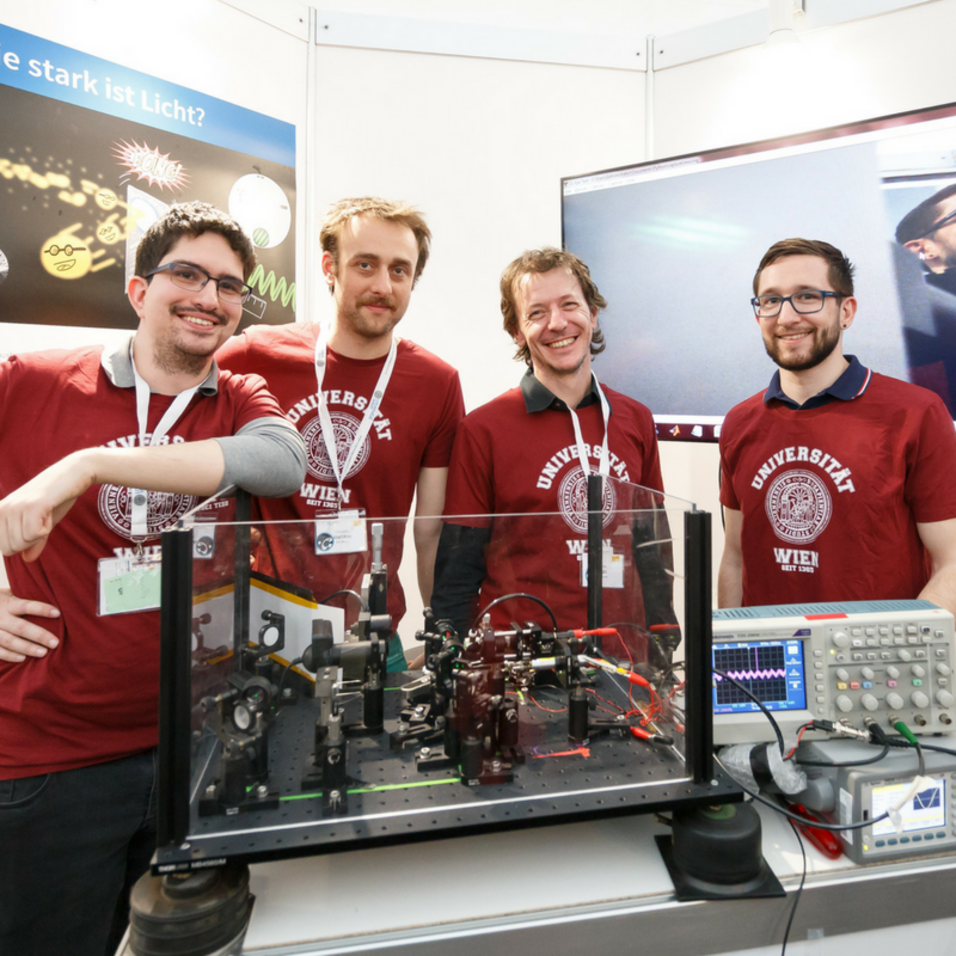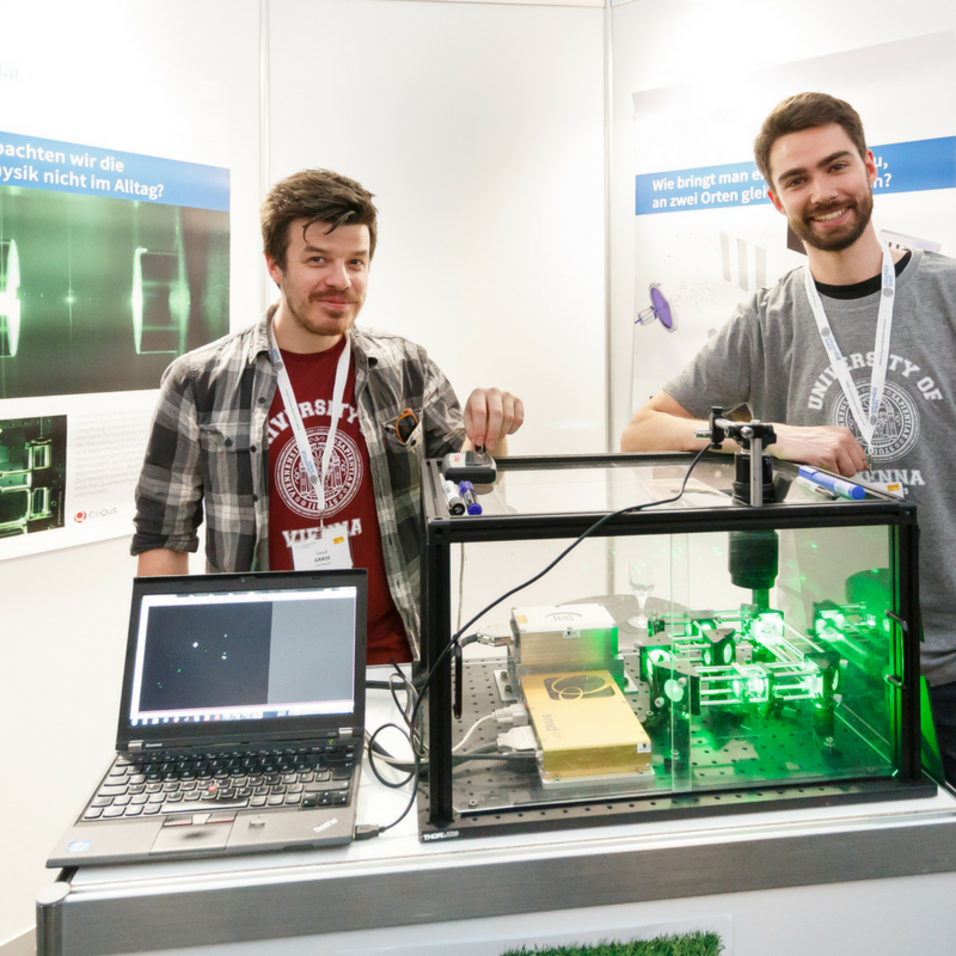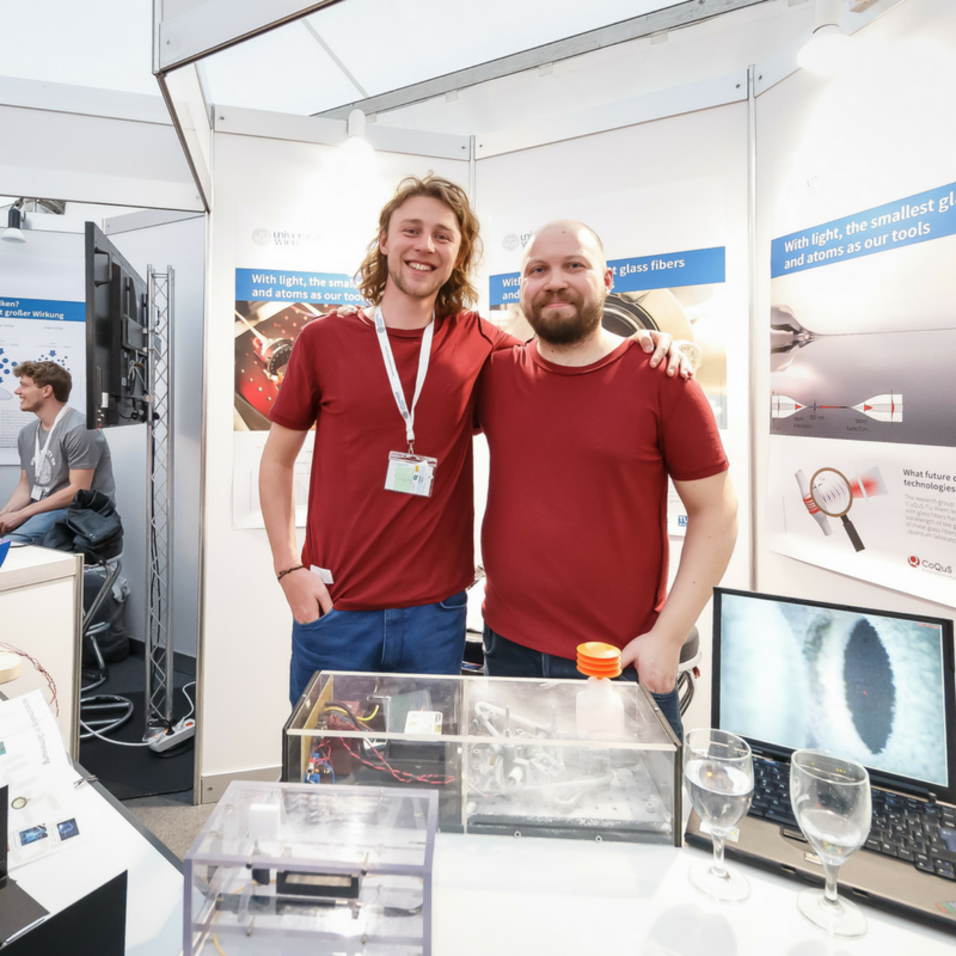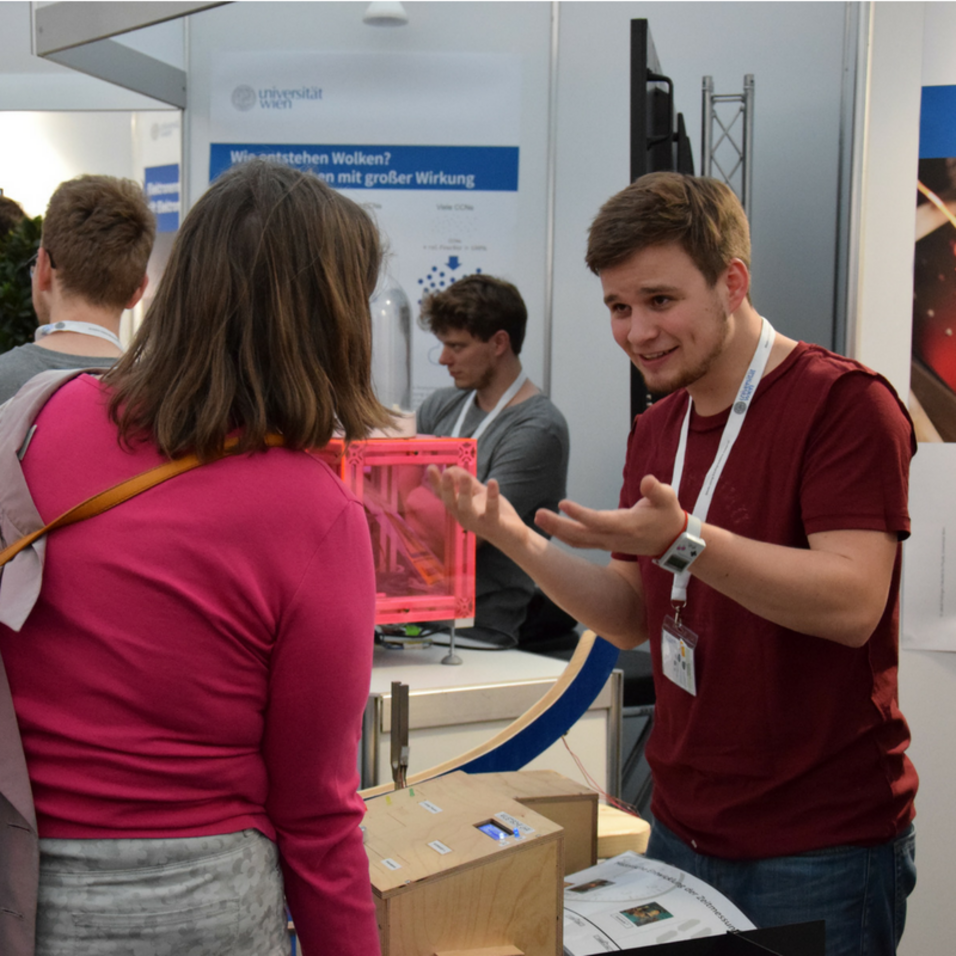The Long Night of Research (Lange Nacht der Forschung - LNF) is the only nationwide science communication event that makes the services of local institutions accessible to the general public. It is also the largest Research event in Austria made possible every two years by several Austrian government ministries.
CoQuS presented the following projects:
- The Heisenberg uncertainty principle
Using a simple optical experiment, visitors to the LNF2018 were able to investigate the Heisenberg uncertainty principle. This principle makes it possible to spatially delocalise even massive molecules. In modern matter wave interferometers of the research group quantum nanophysics (Prof. Dr. Markus Arndt) these are examined for their wave properties.
Particles on the micro- to nanoscale are held in suspension with the help of optical forces in the focus of a laser beam. In doing so, the physical background on the topic of light-matter interaction was explained and brought the visitors of LNF2018 closer to the prospect of quantum experiments with massive objects intended to shed light on the boundary between quantum physics and the classical everyday world. - Effects of light pressure
Light is an extremely precise and delicate tool: in the labs of the research group quantum optomechanics (Prof. Dr. Markus Aspelmeyer) the pressure of light on objects in the nanometer and micrometer range is used to control their movement to quantum level. At the LNF2018, we presented a demonstration experiment that visualizes the tiny effects of light pressure on a kind of "micro-jump board" with the naked eye. - Precision with a Thorium-based quantum clock
Precision drives new technologies: with each new step toward precision, we've been able to create more complex and useful devices, from ancient astrolabes to modern GPS satellites. In the Quantum Metrology Research Group (Univ.Prof. Dr. Thorsten Schumm) we look deeper than the electron cloud of an atom that is usually manipulated and try to gain access to the atomic nucleus to initiate the next era of precision with a thorium-based quantum clock. We will be presenting simple, interactive experiments for all ages, showing how such a watch would work in practice. - The optical Nanofiber
Doctoral students of the research group Applied Quantum Physics (Univ.Prof. Dr. Arno Rauschenbeutel) presented the main component of their quantum optics experiments: the optical nanofiber. By sending laser light through a fiber that is 50 times thinner than human hair, we can couple single atoms at the quantum level to help develop novel quantum technologies. - Optical frequency combs
Doctoral students from the Christian Doppler Laboratory for Mid-IR Spectroscopy at the University of Vienna (Dr. Oliver Heckl) presented their modern laser-optical tools, which enable the precise analysis of very small molecule concentrations in gas samples, such as Tumor markers in the breath or trace gases in the atmosphere. Central to this is the further development of a very special class of precision lasers - so-called optical frequency combs - as well as high-performance infrared mirrors, the latter in cooperation with the industrial partner Crystalline Mirror Solutions. - Photons & neurons
Light is probably the most important means for us to perceive our world. How does this happen and where does this process begin? The research, which we carry out in the research group Quantum Information and Fundamentals of Physics (emer., Univ.-Prof. Dr. Anton Zeilinger), aims to link quantum physics and neuroscience. We use single photons, the smallest particles of light, to understand the path of light through the eye to the brain. At the LNF2018 the group showcased impressive visual sensitivity of our eyes, which are equipped with light detector cells. These cells have evolved over millions of years and can even detect individual light particles. They offered an interactive simulation in which visitors learned how signals are generated and processed and whether they can all reach the brain via the "highway" of the signals, the optical nerve.







